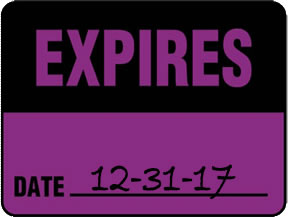Feature Focus: Shelf Life Tracking
PowerShift 4.10 adds tracking of controlled inventory that has a finite shelf life, whether purchased or manufactured. Each lot or serial number is effectively date-stamped on receipt, enabling older items to be used first and, optionally, prevent expired inventory from being used.
You'll first need to set up shelf life codes typical of your items in Shelf Life Codes Maintenance (TSLM). Enter the shelf life in days and determine whether to warn if the operator attempts to pick expired inventory or restrict it from being picked.
Next, you'll need to assign shelf life codes by item in Enterprise Item Maintenance (IM). When an item with a shelf life code is received, the expiration date is calculated as the current date plus the number of days defined by the shelf life code. The operator can enter a different date if required, as would likely be the case for items with vendor-assigned expiration dates.
After you assign a shelf life code to an item, you'll need to use Maintain Shelf Life Date (ISD) to assign expiration dates to existing stock. ISD is also used to change expiration dates in the event of an entry error.
The Shelf Life Stock Status Report (ISLR) allows you to monitor date-controlled inventory. Many sort and selection options are offered, enabling you to value expired stock or to review inventory that will expire in the coming weeks or months.
If you have questions about shelf life dates or other PowerShift features, contact the Qantel Helpdesk or call us at 630.300.6999.

